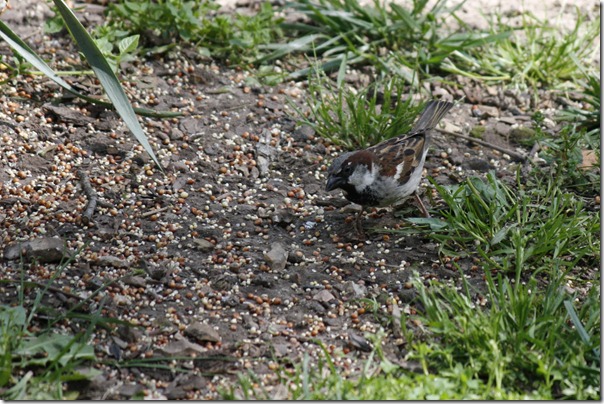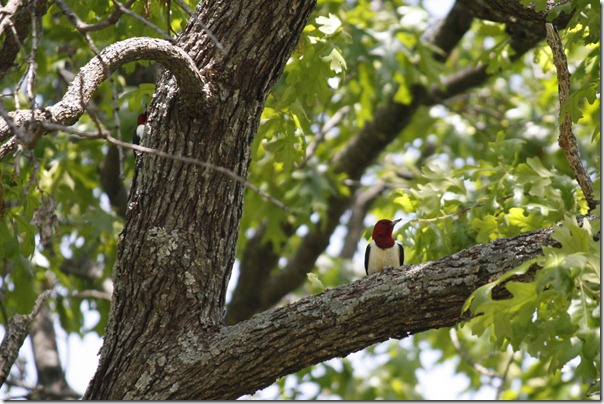Going to my parents’ place at the lake is like visiting an aviary sanctuary. And before we even saw one bird, we were greeting by a symphony of bird songs.
Of course there are the usual suspects like sweet, little House Sparrows (Passer domesticus)…
…and the familiar American Robin (Turdus migratorius).
Yes I am a total geek and researched the Latin names for birds.
We also saw tons of hummingbirds (which reminds me that I should get my feeder out at home.)
These two cuties are male and female specimens of the Black-chinned Hummingbird (Archilochus alexandri).
Who knew that woodpeckers like hummingbird food too? I believe this is a female Downy Woodpecker (Picoides pubescens)
Speaking of woodpeckers, check out these two red-headed beauties (Melanerpes erythrocephalus)! Anyone else reminded of Woody the Woodpecker’s laugh here?
This little stunner is a male American Goldfinch (Spinus tristis).
Also at the lake right now are Baltimore Orioles (Icterus galbula). My parents had been telling me about them for a couple of months and I couldn’t believe how beautiful these birds are!
Baltimore Orioles are spectacular birds with vibrant yellow-orange bodies and black and white striped wings. Of course as is the case with most birds, the females are not quite as showy and brightly colored. But they are every bit as beautiful.
Oriole fun fact #1 – Orioles typically over winter in the tropical regions of Central America and begin their Spring migration to the Great Lakes area of North America in mid-February.
Oriole fun fact #2 – Baltimore Orioles were named after the “Baltimores” because black and orange were the colors of the colonial proprietors of the Maryland colony.
Oriole fun fact #3 – Young male Baltimore Orioles have to wait until the fall of their second year to get their vibrant adult plumage.
Oriole fun fact #4 – Orioles typically feed on insect and nectar. My parents attract them with this oriole feeder which is similar to hummingbird feeder but with a larger perch.
As you can tell, I became quite fascinated with orioles. But there was one more elusive bird I was hoping to catch a glimpse of. My mom had spotted a couple of them at the bird feeder recently. So I stood as quietly as possible on the porch and waited.
And waited.
And waited.
Finally, my patience was rewarded and I was able to capture a picture of the timid and elusive Indigo Bunting (Passerina cyanea).
Just look at the incredible color of this bird!
I can see why my parents are so happy living at the lake.
Peace,
your amateur birdwatcher extraordinaire















Leave a Reply